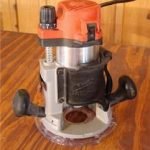Woodworking is an art that requires precision and accuracy to produce high-quality results. A crucial tool in achieving this level of accuracy is the woodworking dowel jig drill guide. This device aids in creating perfectly aligned holes for dowels, ensuring strong and seamless joints in your woodworking projects.
When it comes to woodworking, precision is key. Whether you’re working on a simple DIY project or a professional piece of furniture, the accuracy of your joints can make or break the final product. That’s where the woodworking dowel jig drill guide comes in – it helps ensure that your dowel holes are perfectly aligned every time, resulting in a seamless finish.
In this article, we will delve into the world of woodworking dowel jig drill guides, discussing their importance in ensuring accurate joints. We will explore the different types of guides available, provide a step-by-step guide on how to use them effectively, offer tips for choosing the right size and material for your needs, and highlight common mistakes to avoid when using these tools.
Additionally, we will compare manual vs. automatic woodworking dowel jig drill guides to help you make an informed decision. So let’s get started and enhance your woodworking projects with the right dowel jig drill guide.
Understanding the Importance of Accuracy in Woodworking
Woodworking requires a high level of precision and accuracy to ensure the quality of the finished product. Accuracy is especially crucial when it comes to joining wood pieces together using dowels. This is where a woodworking dowel jig drill guide becomes indispensable. The use of this tool ensures that the holes for the dowels are drilled at the correct angles and depths, resulting in strong and seamless joints.
One of the key reasons why accuracy is so important in woodworking is that it directly affects the structural integrity of the finished piece. Whether you are building furniture, cabinets, or other wooden structures, properly aligned and fitted dowels are essential for ensuring that the piece can bear weight and withstand everyday use without coming apart. Additionally, accurate drilling also contributes to the overall aesthetics of the project, as perfectly matched joints create a professional and polished look.
A woodworking dowel jig drill guide provides woodworkers with a reliable method for achieving precision in their projects. By offering consistent hole placement and depth control, these tools eliminate much of the guesswork and potential for error that comes with manual drilling.
As a result, woodworkers can have confidence in the stability and appearance of their finished work. When selecting a woodworking dowel jig drill guide, it is crucial to consider factors such as size, material, and adjustability in order to achieve optimal results.
| Importance of Accuracy | Woodworking Dowel Jig Drill Guide |
|---|---|
| Ensures structural integrity | Provides precise hole placement and depth control |
| Affects overall aesthetics | Eliminates guesswork and potential for error |
| Crucial for proper joint fitting | Consider factors such as size and material when choosing |
Types of Woodworking Dowel Jig Drill Guides Available
When it comes to woodworking, having the right tools can make all the difference in the quality and precision of your work. One essential tool for any woodworker is the dowel jig drill guide. These guides come in a variety of types, each designed to suit different woodworking needs and preferences.
Single-Hole Dowel Jig
The single-hole dowel jig is a simple yet effective tool for creating precise dowel holes in wood. This type of jig is typically used for projects that require only a few dowels, such as joining boards together or creating simple furniture pieces. Single-hole jigs are easy to use and are often preferred by beginners due to their simplicity.
Multi-Hole Dowel Jig
For more complex woodworking projects that require multiple dowels, a multi-hole dowel jig is the ideal choice. This type of jig allows for quick and accurate drilling of multiple holes at once, saving time and ensuring uniformity in your work. With adjustable spacing options, multi-hole jigs offer versatility and efficiency for a wide range of woodworking applications.
Self-Centering Doweling Jig
When precision and alignment are crucial, a self-centering doweling jig is the go-to option. This type of jig automatically centers itself on the edge or surface of the wood, eliminating the need for manual adjustments and measurements. Self-centering jigs ensure consistent hole placement and are perfect for intricate joinery, cabinetry, and other detailed woodworking tasks.
With these various types of woodworking dowel jig drill guides available, woodworkers can easily find the right tool to suit their specific project needs. Whether it’s a simple single-hole jig or a versatile multi-hole guide, having the right dowel jig drill guide can greatly enhance the accuracy and efficiency of your woodworking endeavors.
Step-by-Step Guide on How to Use a Woodworking Dowel Jig Drill Guide
A woodworking dowel jig drill guide is a useful tool for creating accurate and precise holes in woodworking projects. Whether you are working on a DIY project or a professional woodworking task, using a dowel jig drill guide can ensure that your joints fit perfectly and your project looks polished and professional.
Using a woodworking dowel jig drill guide may seem intimidating at first, but it is actually quite simple once you understand the process. Here is a step-by-step guide on how to use a woodworking dowel jig drill guide:
1. Set up your materials: Gather the pieces of wood that you will be joining together and mark the location of the holes where you want to place the dowels. Use a measuring tape and pencil to ensure accuracy.
2. Clamp the jig in place: Secure the woodworking dowel jig drill guide onto the surface of the wood where you want to create your hole. Make sure that it is firmly in place to prevent any movement during drilling.
3. Drill the holes: Use a drill with an appropriate bit size to create holes in the wood, following the guides provided by the woodworking dowel jig drill guide. Press down firmly and drill straight into the wood, ensuring that each hole is deep enough for the dowel to fit snugly.
By following these simple steps, you can effectively use a woodworking dowel jig drill guide to create precise and accurate holes in your woodworking projects, making assembly easier and your finished product more professional-looking.
Tips for Choosing the Right Size and Material for Your Woodworking Dowel Jig Drill Guide
When it comes to choosing the right size and material for your woodworking dowel jig drill guide, there are a few key considerations to keep in mind. The right size and material will greatly impact the accuracy and durability of your woodworking projects. Here are some tips to help you make the best choice:
Tips for Choosing the Right Size
When choosing the right size for your woodworking dowel jig drill guide, consider the specific projects you will be working on. Different sizes will accommodate different diameters of dowels, so it’s important to choose a jig that can handle the sizes you require. Consider investing in a set of different sized jigs to ensure you have versatility in your woodworking projects.
Tips for Choosing the Right Material
The material of your woodworking dowel jig drill guide will also play a significant role in its performance and longevity. Common materials for these jigs include aluminum, steel, and plastic. Aluminum and steel jigs offer durability and precision, while plastic jigs may be more lightweight and affordable. Consider the frequency of use and the demands of your projects when deciding on the material.
Additional Considerations
- Look for adjustable options: Some woodworking dowel jig drill guides come with adjustable settings to accommodate a range of sizes, offering versatility for different projects.
- Read customer reviews: Before making a purchase, take some time to read reviews from other woodworkers who have used the jig. This can provide valuable insights into its performance and durability.
- Consult with experienced woodworkers: If you’re new to using a woodworking dowel jig drill guide, consider reaching out to experienced woodworkers for recommendations on size and material based on their expertise.
By carefully considering both size and material when choosing a woodworking dowel jig drill guide, you can enhance the accuracy and quality of your woodworking projects for years to come.
Common Mistakes to Avoid When Using a Woodworking Dowel Jig Drill Guide
Incorrect Placement of the Dowel Jig
One common mistake to avoid when using a woodworking dowel jig drill guide is placing it incorrectly on the wood. If the jig is not positioned properly, it can result in misaligned holes and inaccurate dowel placements. To avoid this mistake, always ensure that the jig is firmly secured to the wood and aligned with the intended placement of the dowels.
Using the Wrong Drill Bit Size
Another mistake to watch out for is using the wrong drill bit size with your woodworking dowel jig drill guide. Using a drill bit that is too large or too small for the dowels can lead to loose or tight fits, affecting the overall strength and stability of your woodworking project. Always double-check and use the recommended drill bit size for your specific dowel jig to achieve precise and accurate results.
Rushing Through the Process
Rushing through the drilling process when using a woodworking dowel jig drill guide can also lead to mistakes. Taking your time to carefully position the jig, align it with markings on the wood, and drilling at a steady pace will result in cleaner and more accurate holes. Rushing through these steps can result in misaligned holes and ultimately affect the quality of your woodworking project.
By being mindful of these common mistakes and taking proactive measures to avoid them, you can ensure that you are getting the most out of your woodworking dowel jig drill guide. Paying attention to detail and taking your time during the drilling process will ultimately lead to more precise, professional-looking outcomes for your woodworking projects.
Comparing Manual vs Automatic Woodworking Dowel Jig Drill Guides
Woodworking enthusiasts often find themselves facing the choice between using a manual or automatic woodworking dowel jig drill guide. This decision can significantly impact the quality and efficiency of their projects, making it crucial to understand the differences between these two types of guides.
One of the main distinctions between manual and automatic woodworking dowel jig drill guides is the level of control they provide. Manual guides require hands-on manipulation, which allows for more precise adjustments and positioning. On the other hand, automatic guides are designed to streamline the drilling process, often offering features such as self-centering mechanisms and preset drilling depths.
In addition to control, another factor to consider when comparing these two types of woodworking dowel jig drill guides is speed and productivity. Automatic guides are generally faster to set up and use, making them suitable for larger-scale production or repetitive tasks. However, some woodworkers prefer the hands-on approach and tactile feedback provided by manual guides, especially when working on custom or intricate pieces.
When selecting between a manual or automatic woodworking dowel jig drill guide, it is essential to consider your specific project requirements and personal preferences. Some woodworkers may benefit from having both types of guides in their toolkit, utilizing each for its respective strengths in different situations.
| Manual Woodworking Dowel Jig Drill Guide | Automatic Woodworking Dowel Jig Drill Guide |
|---|---|
| Provides hands-on control | Offers streamlined drilling process |
| Suitable for precise adjustments and positioning | Faster set up and use |
| Ideal for custom or intricate projects | Great for large-scale production or repetitive tasks |
Conclusion
In conclusion, the woodworking dowel jig drill guide is an essential tool for any woodworker looking to enhance their projects with precision and accuracy. Understanding the importance of accuracy in woodworking is crucial, and having the right tool for the job can make all the difference. With various types of woodworking dowel jig drill guides available, it’s important to choose the right size and material that suits your specific project needs.
Following a step-by-step guide on how to use a woodworking dowel jig drill guide can help ensure proper usage and optimal results. Additionally, being aware of common mistakes to avoid when using this tool can save time and frustration during your woodworking process. Whether you prefer a manual or automatic woodworking dowel jig drill guide, there are advantages to both types, depending on your personal preferences and project requirements.
Ultimately, enhancing your woodworking projects with the right dowel jig drill guide can lead to more professional-looking results and increased efficiency. By carefully selecting the appropriate tool for your needs and following best practices for usage, you can take your woodworking skills to the next level and enjoy greater success in your projects.
Frequently Asked Questions
What Is the Best Drill Bit for a Dowel Jig?
The best drill bit for a dowel jig is one that matches the size of your dowel. It’s important to choose a sharp and high-quality brad point or twist drill bit to ensure clean and precise holes.
How Do You Drill Accurate Holes in Dowels?
To drill accurate holes in dowels, it’s crucial to use a sharp and properly sized drill bit. Secure the dowel and use a steady hand, ensuring the drill is perfectly vertical to create straight and precise holes.
How Deep Should a Dowel Hole Be?
The depth of a dowel hole should be just slightly shallower than the length of the dowel itself. This allows for a tight fit while still leaving enough room for glue to distribute evenly inside the joint for a secure bond.

Hi everyone! I’m a woodworker and blogger, and this is my woodworking blog. In my blog, I share tips and tricks for woodworkers of all skill levels, as well as project ideas that you can try yourself.





